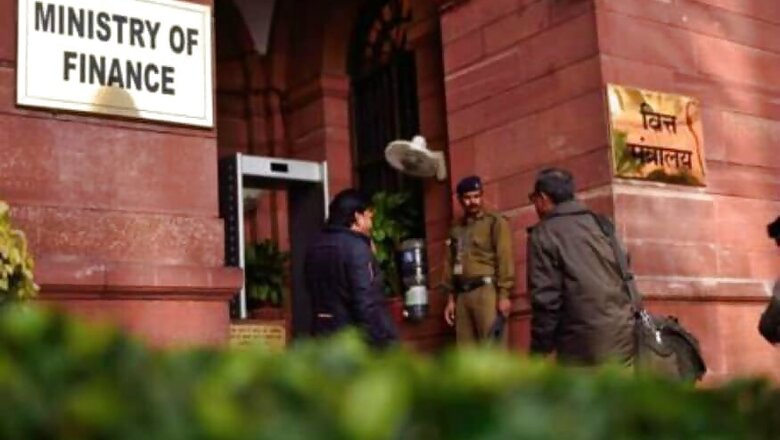
views
New Delhi: One of the Budget proposals of Finance Minister Nirmala Sitharaman, about India raising a part of its external debt in foreign currencies, has raised so many hackles that its implementation is now under a cloud.
Media reports over the last few days indicate that the RSS may be opposed to any such move and that the government may be forced to rethink the proposal. Some other reports have even linked the abrupt transfer of Economic Affairs Secretary Subhash Chandra Garg to the internal backlash against this proposal, a link Garg has denied. He has since sought voluntary retirement, becoming one of the very few senior-most bureaucrats in the Finance Ministry to have ever been shunted out.
So what exactly is this proposal, which has generated so much chatter? Put simply, it pertains to India raising debt in foreign currencies, like the dollar or the yen, for the first time in overseas markets. Till now, the Indian government has always raised debt only in the domestic market in rupee terms to finance its deficit, which is the gap between what it earns annually and what it has to spend.
The word ‘foreign’ or videshi in the new Budget proposal seems to have got everybody’s goat in this case, at least politically. Market experts say that the proposal may have come about in the Budget for the first time, but has been under discussion for years with previous political dispensations ruling against it.
In her speech on Budget day, the FM had said, “India’s sovereign external debt to GDP is among the lowest globally at less than five per cent. The government would start raising a part of its gross borrowing programme in external markets in external currencies. This will also have beneficial impact on demand situation for the government securities in domestic market.”
This proposal has since seen furious debates among experts, with some former RBI governors, including Raghuram Rajan, cautioning against it. Rajan said in a column in The Times of India that India’s sovereign external debt was low (one of the reasons the FM gave for starting borrowings in foreign currency) because the country had never exposed its debt to vagaries of currency fluctuations — something that is inevitable if Sitharaman’s plan were to fructify.
Not just former RBI governors, economists and others have also warned the government against borrowing any money in foreign currencies. And yet, many experts found merit in Sitharaman’s proposal, saying it will lower the overall cost of India’s borrowings since interest rates were cheaper globally than in the Indian market. They had said that if government took some of its borrowing overseas in other currencies, it would help the Indian private sector to borrow more domestically and therefore raise private investments.
Analysts at Kotak Institutional Securities said in a note that the government’s proposed foreign currency sovereign bond issuance will warrant “greater macroeconomic prudence in light of high extent of foreign ownership in Indian debt and equity. We are not sure of the requirement for FCY sovereign bonds at the current juncture. We believe that better fiscal management and focus on economic reforms will result in higher domestic savings, which will obviate the need for FCY sovereign debt.”
The Kotak analysts referred to the experience of some countries with high exposure to foreign capital which also had weak macro fundamentals: Argentina, Thailand, Brazil, Turkey, etc. And said that their experience in raising debt in foreign currencies had not been pleasant. They also noted that interest rate differential between foreign and Indian currency debt would anyway be mitigated in the long run.
“While attracting foreign savings into debt is essential, it should not be based on a short-term view of current low interest rates while internalising forex risks. In the long run, payouts on foreign currency borrowing will be similar (if not higher) to local currency sovereign issuances — with conservative forex assumptions.”
But an analysis by the State Bank of India said that India’s macro economic indicators and those of the countries mentioned above were not similar and there was actually a fair case for India to go overseas and begin borrowing in foreign currencies.
“The data of countries that plunged into non-domestic currency debt crisis indicates that India’s position is significantly better and it is foolhardy to make any comparison. In these countries in the bubble phase, debt to GDP ratio rose to around 125% and average CAD was more than five per cent of GDP. In India’s case, the sovereign external debt is less than four per cent and total external debt is less than 20% of GDP. CAD is only 2.1% of GDP,” the SBI analysis said.
But whatever subject experts may say — and they seem to find almost equal points of merit and demerit in Sitharaman’s move to raise debt in foreign currencies — a decision on this issue is most likely going to be a political call.
(Author is a senior journalist. Views are personal)


















Comments
0 comment